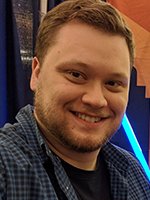“Clone.” No other word is as sure to elicit strong reactions from Smash fans (well, except maybe tripping). In Smash parlance, “clones” or “clone characters” are fighters who share all or most of their basic moveset and animations with another character.
Six clone characters—Pichu, Young Link, Dr. Mario, Falco, Ganondorf, and Roy—were infamously added to the roster of Super Smash Bros. Melee in order to increase the number of fighters. Melee had an unusually short development cycle, and adding clones was the only way Sakurai could implement the number of newcomers he thought would satisfy players.
The aforementioned characters are all true clones. However, many of them have heavily-tweaked physics attributes, hitboxes and other properties. These changes mean that, while they share a moveset on paper, they generally play in a way that is drastically different from their counterparts.
While Melee clones like Falco are beloved by some community members, the overall reaction to these characters’ inclusion was mixed. Some fans erroneously perceived that they were “stealing” slots on the character-select screen from newcomers with unique movesets. Others felt characters like Ganondorf were shortchanged by being forced to adopt the moveset of a pre-existing fighter. By the time Super Smash Bros. Brawl was released, all of these characters were either partially “de-cloned” (Ganondorf, Falco) or cut from the roster entirely (Dr. Mario, Pichu, Young Link, Roy). Characters like Ganondorf and Falco, who still share some clone DNA, were dubbed “semi-clones” by fans. True clone characters seemed to be a thing of the past, at least for the time being.
Enter Super Smash Bros for Nintendo 3DS and Wii U. In the development of these titles, Sakurai once again toyed with the idea of clones. In order to represent more characters in the game, he developed alternate costumes for several fighters that depicted different but similar characters from their series. Some of these remained costumes, like Alph and the Koopalings, but three—Dark Pit, Lucina, and Dr. Mario—were given small gameplay tweaks and were deemed independent characters.
These “Smash 4 clones” were implemented pretty differently than the ones in Melee. They began life as alternate costumes, which means they have far fewer differences from their source characters. In fact, Dark Pit and Lucina have identical physics to Pit and Marth, respectively, with only minor alterations to their moves. Unsurprisingly, fans’ opinions were once again split by these clones’ inclusion. Many felt that such minor tweaks did not warrant a separate slot on the character-select screen.
For Super Smash Bros. Ultimate, Sakurai and his team have decided to take a different approach. The Melee clones have returned as “semi-clones” of their original counterparts, all containing varying degrees of clone DNA. Lucina and Dark Pit have returned as well, joining newcomer Daisy in an entirely new category of officially-recognized clones, who are dubbed “echo fighters” by Sakurai and his team. While somewhat speculative, it is reasonable to assume that these three characters aren’t the only echo fighters we’ll see in the game.
It’s important to understand that “clone character,” a title which was coined by fans, and “echo fighter” are not entirely interchangeable. This is made obvious by the fact that Dr. Mario, who the community generally considers to be a clone, has not joined the echo fighter club. Why?
When the folks over at GameXplain asked Nintendo Treehouse’s Nate Bihldorff this exact question, he explained, “Essentially an echo character shares the main attributes: walk and run speed, jump height, basic attack animations, general knockback… somebody like Dr. Mario is heavier, has much stronger knockback, has different moves… that’s sort of the line.” Thus, each echo fighter will share not only the same moveset with another character, but the same physical attributes as well, just like Lucina and Dark Pit do with Marth and Pit. Using this criteria, the Melee clones would not have qualified as echo fighters, even in their original game.
If we were to speculate a bit, we could infer the echo fighters are designed so they can be developed quickly and more easily balanced against the rest of the cast. These characters won’t need to be tested as rigorously because their matchups will likely be similar to the character they’re based on. The fact that Pit and Dark Pit share a spot on the current Smash 4 tier list is a testament to this.
Sakurai told us not to expect as much new content in Ultimate as we got in previous games given that returning content was prioritized. It’s likely the echo fighters serve a similar purpose to Melee’s clones; they’re a less resource-intensive way to increase the newcomer count. Anecdotally, the reaction to echo fighters seems positive so far, with many fans treating their announcement as a new avenue for speculation. The Smash community seems to be abuzz over which characters would best fit as “echoes” of existing characters. The negative stigma attached to “clones” seems far less prevalent, if not gone completely.
Clones? No, not clones. Echo fighters.
It’s amazing how much of a difference a name can make.
What are your thoughts on echo fighters? Are there any that you really hope will make an appearance? Sound off in the comments below!
Last edited:

